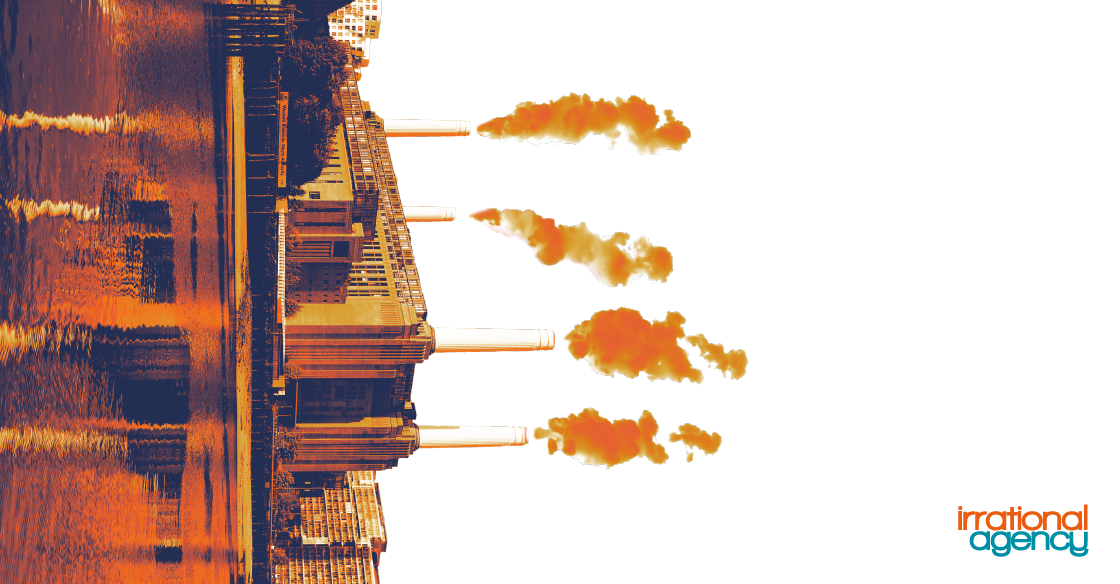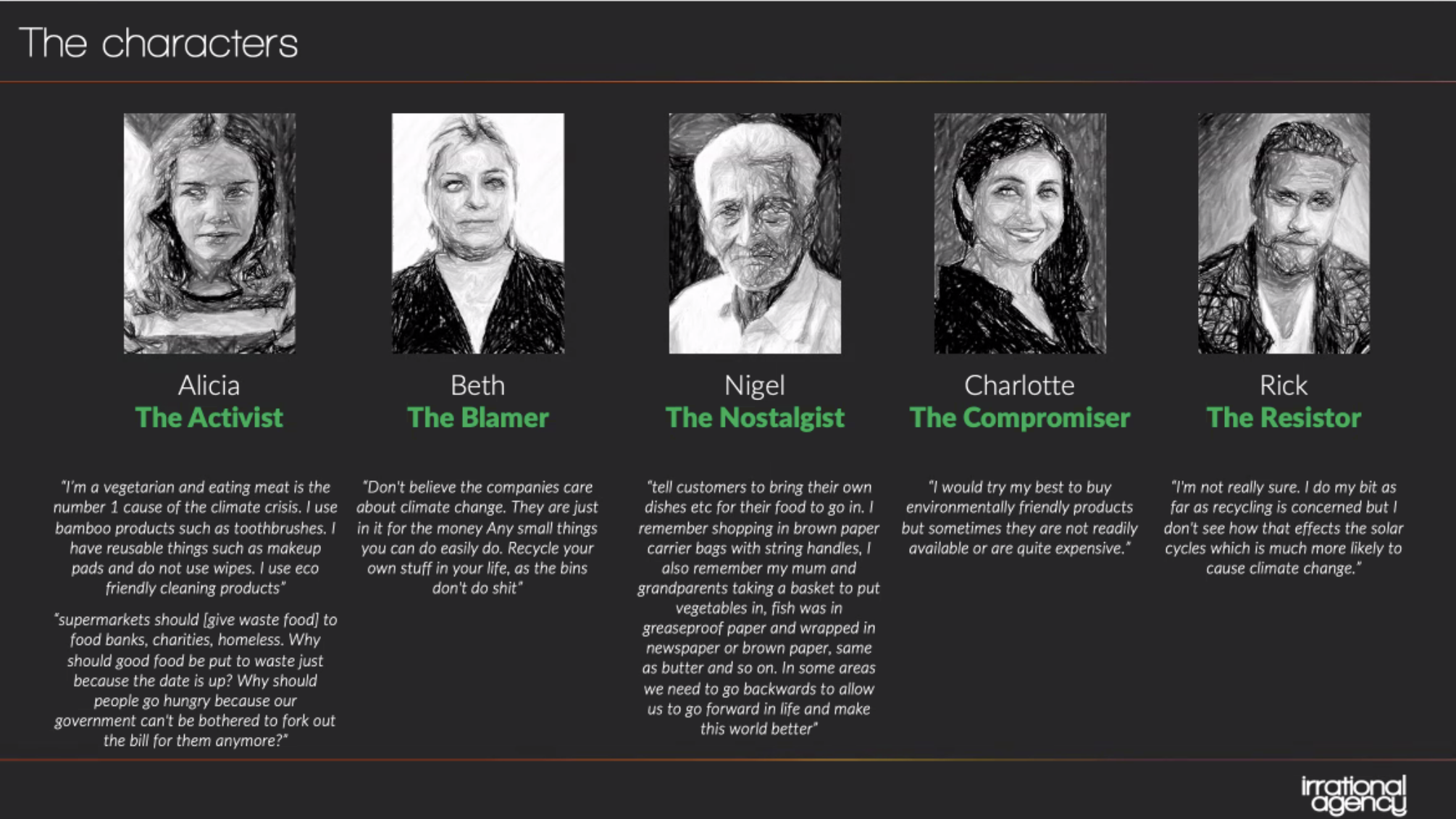
4 Emerging Consumer Narratives Around Sustainability
 Irrational Agency
Irrational Agency
The concept of sustainability for consumers has been on a steady cultural incline since the 1980s, but it has often been shrouded in mystery and doubt.
There is a growing trend of sustainability in the consumer market. Consumers are increasingly interested in how they can make eco-friendly choices that benefit both themselves and the planet. This has led to the rise of sustainability as a consumer narrative. Are these movements strong enough to make a change? Why can't consumers identify with sustainable initiatives? What are we doing wrong? In this blog post, we will explore what sustainability means to consumers through 4 emerging narratives.

Shifting the Sustainability Narrative
The sustainability narrative has been one of doom and gloom in the past decades. We've all heard horror stories about the consequences of rising temperatures and countries getting submerged due to increasing water levels. Changes in weather patterns could start a wave of problems with our food production systems. We are all aware of the consequences and, yet, our actions have not changed much.
Part of this problem is the concept of the "tragedy of the commons". It is a term that was first coined by Garrett Hardin in 1968 and describes the problem of people over-using a shared resource (e.g. a piece of land) because it is in their individual self-interest to do so. Even though we know that sustainability is important for the long-term health and habitability of our planet, many of us continue to act in ways that are not sustainable. The sustainability narrative is not yet strong enough to compel the masses to act together. Individual actions get lost since they're making a difference (one person reducing their meat intake by 60% or a household making effort to reduce single-use plastic consumption to zero) and consequently consumers lose their motivation.
However, there is a growing movement of sustainability narratives that are shifting the focus from doom and gloom to hope and possibility. One familiar example of this is helping hotels reduce water and energy consumption by reusing towels. This is a form of nudging to influence people to form new habits and change the "default choice" from washing towels after each use to not washing them unless specifically asked for. This small switch was enough to reduce water consumption in hospitality by 70%.
Nudges, however, are not enough to change lifestyles or make bigger societal shifts. Creating narratives that bring forth enough of a mass movement to really start a change is what's going to make a difference. Let's explore some emerging sustainability narratives.
1. Carbon Footprint
The term "carbon footprint" has become a popular way to talk about sustainability in recent years. A carbon footprint is the total amount of greenhouse gasses emitted by an individual, event, or product. It is usually expressed in equivalent tons of carbon dioxide (CO₂). The average American's carbon footprint is 16 metric tons, which is about double the global average. This number reflects a high consumption of fossil fuels, heavy reliance on car transportation, and a meat-heavy diet.
As sustainability has become more important to consumers, the carbon footprint has become a key metric for companies to track and reduce. In fact, many companies are now setting goals to become "carbon neutral" or even "carbon negative". This means that they are offsetting their emissions by investing in renewable energy or planting trees. Consumers know reducing carbon footprint is important and they do think about it. The problem is that it isn't fun to think about. The carbon conversation, in fact, carries more negative than positive emotions, even when there is a positive message to send – like having achieved net-zero or carbon neutrality.
The "Plant a Tree" movement feels somewhat more real than just a brand stating "we've reduced our carbon emissions by 15% across all of our factories". It's something consumers feel a part of and it's caring for the Earth. The only problem is that it doesn't really make enough difference to solve the problem. Millions of trees would have to be planted to offset carbon emissions and the tree planting schemes we currently have are not big enough to achieve that.
2. Recycling
Despite all the prominence of climate change in the media, recycling is still the primary interface with the sustainability world for most consumers. This is what they know, and what they feel in control of – therefore it is what they find easier and more natural to think about.
Brands that talk about recycling already have a shortcut to sending the "We're sustainable" signal. They're adopting recycled packaging practices, using recycled materials, and even "circular business models" in which products are designed to be reused or recycled. The challenge with recycling is that it lacks a connection with people on an emotional level apart from the fact that it only makes up for about 3-5% of global carbon emissions. There's a limited impact and it is also something people have been doing for a long time, so it doesn't feel like a new and exciting sustainability solution.
In order to really create change, we need to look beyond recycling and find other ways to reduce our impact on the planet. This is where some of the newer sustainability narratives come in, for example, the sharing economy.
The sharing economy is a term that refers to the collaborative consumption of goods and services. It includes companies like Airbnb, Lyft, and WeWork. The sharing economy has been growing in popularity in recent years as a sustainability solution. It allows people to make use of resources that would otherwise go to waste. For example, an unused room in a city apartment can be rented out on Airbnb, and a car that is only used for a few hours a day can be shared on Lyft.
Another similar new sustainability narrative is the concept of the intangible economy. For example, instead of getting on a flight to Cambodia to visit Angkor Wat, consumers can enjoy a virtual reality experience of the same historical site instead. Both the sharing economy and the intangible economy have the potential to reduce greenhouse gas emissions by eliminating the need for new products and services. It also has the added benefit of being more fun and exciting than traditional sustainability solutions like recycling.
3. Unconscious Attitudes
The secret signals of brands are more powerful than their conversations out loud. There's an unconscious level of attitudes that people have toward each brand and their opinion on its sustainability credentials that are quite different from the explicit rating. How can we measure this?
Irrational Agency ran a research project to compare leading grocery store brands in two different ways. First, by asking people to score a brand from one to five on how sustainable they think they are - using a traditional rating skill approach. Then, second, by asking consumers to tell us the words that they associated with each brand (and we gave them words to pick from).
The study found that certain brands rank very well on the explicit rating score (the first approach) as they seem to be sustainable, but when looking at the unconscious reading through those word associations (the second approach), they ranked much lower down on the list - meaning that consumers don't actually connect unconsciously with their sustainability messages.
This proves that people don't take action because of what a brand says about its sustainability initiatives - consumers are driven by the (hidden) narratives that they have about that brand.
4. Emotional Language
Emotional and global language and feel-good words like "Care, Life, World, Earth" capture the consumer's heart much more than 'net-zero targets' or technical language about climate change or carbon emissions.
When sustainability messaging is emotional, it can connect with consumers on a deeper level and create a more lasting impression. Messages that emphasize local consequences also have more punch. An example is New York City’s recent waste-reduction advertising campaign illustrating that all the garbage thrown out in the city on one single day could fill the Empire State Building.
In some cases, messages that communicate the actual consequences of sustainable consumer behavior change in other ways can be extremely successful. For example, Tide promotes washing clothes in cold water with their #CleanPledge. Apart from encouraging a commitment, the campaign also communicates clear consequences, such as “Switching to cold water for one year can save enough energy to charge your phone for a lifetime.” [1]
In order to create more effective sustainability messaging, it is important to use emotional language that resonates with consumers. This will help to create a more lasting impression and ultimately lead to more sustainable consumer behavior.
Conclusion
There are many reasons to be optimistic about the future of sustainability. Consumers are becoming more aware of the impact their choices have on the environment, more and more companies are committing to sustainability initiatives, and global narratives are gaining traction. There is still a long way to go, but the emerging narratives around sustainability are hopeful and provide a path forward for positive change.
 Read more on how Baby Boomers, Millennials, and Gen Z think and feel about sustainability narratives - download our Hidden Stories Report on sustainability.
Read more on how Baby Boomers, Millennials, and Gen Z think and feel about sustainability narratives - download our Hidden Stories Report on sustainability.

